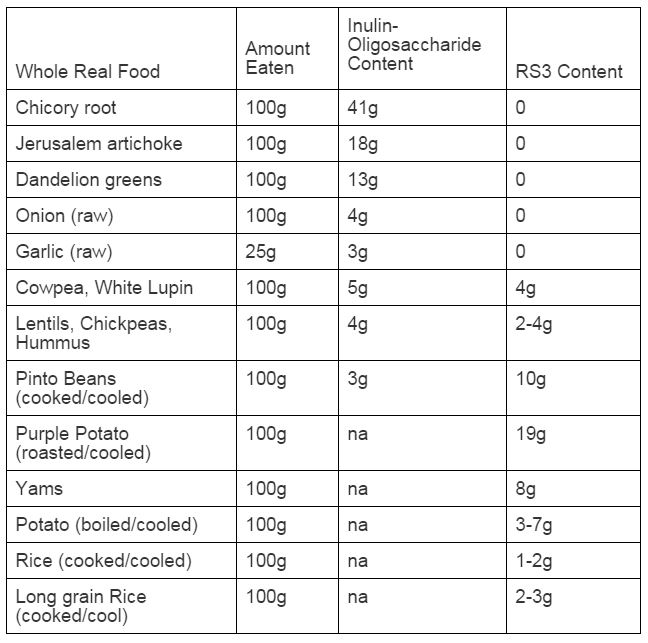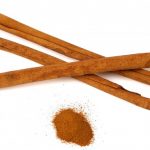Whole Real Food RS3 Expands Lean Core Microbiota
Native South Africans have the lowest CRC rates . Their diet is rich in fermented, ‘stale’, whole grain-maize porridge which they sit out for a few days after making. This starchy staple is abundant in RS3 and it is estimated native Africans consume 40 to 60 grams daily RS3, and otherwise eat a relatively low ‘fiber’ diet of 15-25 g fiber daily.
RS3 is a network of crystallized and aggregated amyloses formed in double helical chains after ‘melting’ during cooking and cooling to room temp (25C) or refrigeration (4C) . The gut microbes can access RS3, but our pancreatic and salivary amylases (starch cutters) cannot. They are not ‘calories’ or ‘carbs’ in the traditional sense. They don’t feed US, they feed our gut flora. Foods like maize porridge, legumes, lentils and whole grains are typically considered low glycemic index (GI). These are also the foods associated with the lowest risks of CRC in epidemiological studies across the world with estimated risk reductions of 30-81%. They are high in conventional ‘fiber’ and resistant starch (RS3).
Root Sources of Colorectal Cancer
More and more studies point to a microbial ‘fingerprint’ that characterizes CRC just as these microbial fingerprints fit nearly all other diseases of industrialized nations. According to recent examinations, guts of individuals with CRC might be described as being marked by low mucus barriers, deficiencies of big butyrate producers and overgrowths of Bacteroides. In the worst case scenarios, the mucus barriers are terribly eroded and overgrowths of even the ‘good’ butyrate producers have invaded. Antibiotics are the causes of many of our missing gut microbes. They wipe out the ‘good’ which allow opportunistic pathogens to grow in their empty niches without regulation or control. Bacteroides are overgrowing somewhere in CRC or pre-clinical stages the newest literature suggests. Bacteroides are ultra fast fermenters of RS2, raw green bananas/plantains and raw potato starch. Being omnivorous and voracious, they are involved with protein fermentation as well.
- Excess Bacteroides
- Pathogens, Opportunistic Flora Overgrowths, Yeasts: Fusobacteria, Klebsiella, etc.
- Low Bifidobacteria
- Low Clostridia clusters IV, F. prausnitzii
- Low Clostridia clusters XIVa, Roseburia and Eubacteria
Fix Root Causes, Avoid Adverse Gut Shifts in Eating High-Dose Raw Resistant Starch
What does work for Lynch perhaps and other colorectal cancer prevention? How to fix root causes?
The modern, disabled gut drastically needs ‘resetting’ back to ancestral norms. Find a farm. Play in healthy dirt. Vigorously look at the 7 Stepsand appropriate seeding/weeding, not overfeeding Bacteroides and starving out the clusters XIVa/IV (Roseburia, etc). Prior posts onRoseburia: Massive Butyrate Powerhouse.
What raises Roseburia in abundance the MOST are starches, RS3 and inulin (Van den Abeele et al 2011, others). They don’t seem to like RS2. Their preference after millions of years of evolution might be related to the broad diversification of resource allocation, eg NOVEL FOOD (roasted tubers, cooked legumes). Very few strains in the gut actually have a preference to live solely on raw tuber or banana/plantain starches. All of them however eat inulin and starches. Cooked food offers much to man and their microbes. The bugs like them. Our brain and muscle metabolism likes them. Whole food also offer fiber which becomes easier to chew and assimilate after cooking and food processing.
RS3 Self Experimenter: 20 – 40 grams/day Resistant Starch in Real Whole Food
Here is a spectacularly diverse gut and N=1, whole, real food resistant starches 20-40 g/day (RS3) enriched Roseburia apparently by 26-fold (compared to healthy uBIOME controls, 4.3-fold higher): Whole Real RS Foods Expand the Lean, Ancestral and Immunoprotective Core Microbiota (Tim Steele’s N=1) .
It appears folate and B vitamin supplementation might help. Our soil probiotics, bifidobacteria, and lactobacilli in our gut produce B vitamins and folates for us.
Both RS3 and inulin are very special for colorectal cancer prevention. Not only do they feed the butyrate powerhouses but they come as ‘high fiber’ packages from evolution.
Roasted has more RS3 because through the dry heat, the water molecules are ‘squeezed’ out of the crystalline lattices, making them tighter. This annealing process is called retrogradation. Boiling produces ‘looser’ lattices (upon cooling) that our digestive enzymes may break down a bit more easily, hence they are more digestible.
http://drbganimalpharm.blogspot.ca/2014/10/dont-eat-raw-resistant-starch-rs2-if.html






